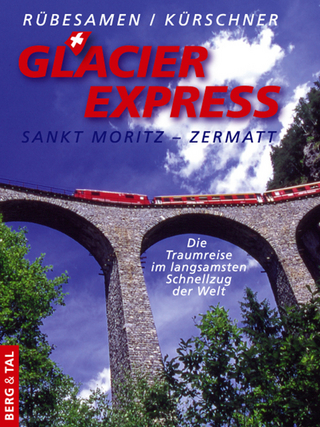
What Railways Left Behind in Britain
Seiten
2025
Amberley Publishing (Verlag)
978-1-3981-2515-5 (ISBN)
Amberley Publishing (Verlag)
978-1-3981-2515-5 (ISBN)
- Noch nicht erschienen (ca. Oktober 2025)
- Versandkostenfrei innerhalb Deutschlands
- Auch auf Rechnung
- Verfügbarkeit in der Filiale vor Ort prüfen
- Artikel merken
A pictorial history of what railways have left behind in Britain and a selection of European countries.
Railways have been around for about 200 years and while the majority have flourished and are still in existence today, many no longer remain. Some of these have completely disappeared, especially those associated with the transportation of industrial commodities such as coal. In some instances, passenger railways have not faired much better than their industrial counterparts and the Beeching Report led to the closure of 2,300 railway stations and over 5,000 of track miles in Britain in the 1960s.
When railways are closed their infrastructure such as track, station buildings, signal boxes etc. are generally removed and over time the land is repurposed for houses, retail footpaths, cycleways or simply returned to open land. However, this is not always the case and sometimes the removal of the railway infrastructure is not undertaken in a diligent manner resulting in items such as track, buildings or redundant equipment being left behind. In addition, railway artifacts such as locomotives or rolling stock may be deliberately left in situ to mark the history of what has gone before.
Steve Liptrot offers a fascinating pictorial history of what railways have left behind in Britain and a selection of European countries.
Railways have been around for about 200 years and while the majority have flourished and are still in existence today, many no longer remain. Some of these have completely disappeared, especially those associated with the transportation of industrial commodities such as coal. In some instances, passenger railways have not faired much better than their industrial counterparts and the Beeching Report led to the closure of 2,300 railway stations and over 5,000 of track miles in Britain in the 1960s.
When railways are closed their infrastructure such as track, station buildings, signal boxes etc. are generally removed and over time the land is repurposed for houses, retail footpaths, cycleways or simply returned to open land. However, this is not always the case and sometimes the removal of the railway infrastructure is not undertaken in a diligent manner resulting in items such as track, buildings or redundant equipment being left behind. In addition, railway artifacts such as locomotives or rolling stock may be deliberately left in situ to mark the history of what has gone before.
Steve Liptrot offers a fascinating pictorial history of what railways have left behind in Britain and a selection of European countries.
Steve Liptrot is a railway enthusiast and photographer based in the Midlands.
| Erscheint lt. Verlag | 15.10.2025 |
|---|---|
| Zusatzinfo | 180 Illustrations |
| Verlagsort | Chalford |
| Sprache | englisch |
| Maße | 165 x 234 mm |
| Themenwelt | Natur / Technik ► Fahrzeuge / Flugzeuge / Schiffe ► Schienenfahrzeuge |
| ISBN-10 | 1-3981-2515-6 / 1398125156 |
| ISBN-13 | 978-1-3981-2515-5 / 9781398125155 |
| Zustand | Neuware |
| Haben Sie eine Frage zum Produkt? |
Mehr entdecken
aus dem Bereich
aus dem Bereich
St. Moritz – Zermatt : die Traumreise im langsamsten Schnellzug der …
Buch | Hardcover (2023)
Verlag Berg & Tal
14,95 €
Betriebsmaschinendienst, Einsatz bei den Bahnbetriebswerken und …
Buch | Hardcover (2024)
EK-Verlag
54,00 €
Buch | Hardcover (2023)
GeraMond (Verlag)
27,99 €


